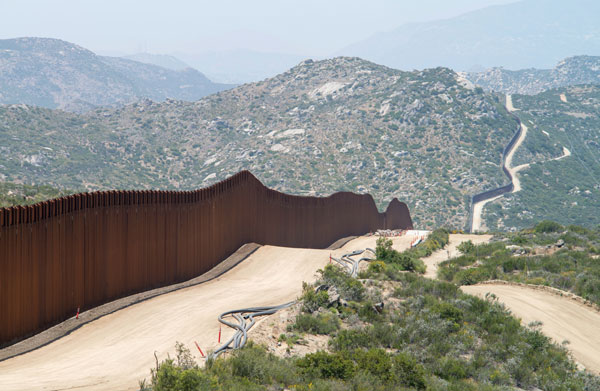Environmental and cultural treasures were significantly harmed by Trump's border wall By Yoonji Kim

[Photo Credit to Unsplash]
According to a report released by the Government Accountability Office, the barriers built along the border between the United States and Mexico under the Trump administration caused "significant damage and destruction" to cultural landmarks and the environment.
According to the watchdog's 72-page report, the former president's efforts to fulfill a campaign promise to deter illegal crossings and activity by building more than 450 miles of border barrier panels along the US southwest border hampered the movement of endangered species, eroded federal lands, disrupted water flow, and "irreparably" damaged sacred tribal sites.
Trump administration officials disregarded regulations protecting cultural and natural resources as they planned to build the wall across Arizona, California, New Mexico, and Texas.
They also constructed more than half of the wall's mileage on federal property.
For instance, barrier panels extended the Lower Rio Grande Valley of Texas, the San Bernardino National Wildlife Refuge, the Coronado National Forest, and the Organ Pipe Cactus National Monument in Arizona.
81% of the panels' mileage replaced existing barriers.
The research stated that in certain cases, broader holes used for vehicle barriers were substituted with narrower pedestrian barriers, preventing the movement of wildlife, including those of endangered species.
Construction of the border wall disrupted water flow during heavy rain events, exacerbating flooding, the GAO also found.
Contractors also drained groundwater from San Bernardino National Wildlife Refuge, which has in turn completely drained some ponds and threatened water levels in others that contain endangered fish.
Parts of the wall's construction have further impacted historic landmarks and locations that certain tribes regard as sacred, in addition to their negative effects on the environment, according to the GAO.
Contractors in Arizona "irreparably damaged" a sacred location in order to make way for the expansion of an existing patrol road by using explosives, Tohono O'odham Nation officials stated.
Many saguaro cactus in Arizona that are holy to the tribe and unique to the Sonoran Desert were also cut down as workers attempted to move them out of the way of their work.
Since President Joe Biden took office, Customs and Border Patrol has taken action to address site remediation, although the main emphasis has been on resolving safety risks over environmental or cultural concerns, such as removing exposed rebar.
The agency has also collaborated with the Interior Department on environmental mitigation, but it “could benefit from documenting a joint strategy that clearly defines roles and responsibilities for funding and implementing mitigation actions; identifies costs and funding sources, and implementation time frames; and specifies when they will consult with Tribes.”
The environmental restoration and mitigation efforts, according to Grijalva, “must be led by science and input from the right stakeholders, including tribes and communities along the border.”
“So many corners were cut in building the wall — let’s not repeat history by cutting corners in repairing the damage it caused,” he said.
The GAO noted that CBP should "evaluate lessons learned" from its earlier evaluations of the barrier's effects, which frequently lacked the information and specificity needed for a thorough examination.
CBP and Interior have agreed to implement the recommendations, according to the watchdog.

- Yoonji Kim / Grade 12
- The Madeira School

![THE HERALD STUDENT REPORTERS [US]](/assets/images/logo_student_us.png)
![THE HERALD STUDENT REPORTERS [Canada]](/assets/images/logo_student_ca.png)
